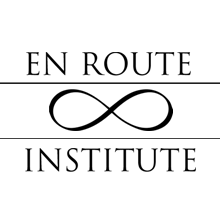@tressa4202
Profile
Registered: 9 months ago
The Ethical Approach to Wildlife Photography: Respecting Nature While Shooting
Wildlife photography is a novel and powerful way to seize the beauty and diversity of the natural world. By means of the lens of a camera, photographers can immortalize fleeting moments that provide the general public a glimpse into the lives of wild creatures. However, this art form comes with great responsibility. While wildlife photography can inspire conservation and a deeper appreciation for nature, it may hurt the subjects it seeks to celebrate if approached without care and consideration. An ethical approach to wildlife photography is just not just an option but a necessity for the preservation of ecosystems and the well-being of animals.
Understanding the Ethical Imperative
On the heart of ethical wildlife photography lies the precept of respect—respect for the animals being photographed, their habitats, and the natural balance of the ecosystems they inhabit. Photographers should do not forget that their presence, regardless of how unobtrusive they attempt to be, can have profound effects on wildlife. Disturbing an animal's natural habits, encroaching on its territory, and even contributing to habitat degradation can have serious and lasting impacts. Wildlife photography should by no means come on the expense of the health and safety of the animals or the integrity of their environment.
Prioritizing Animal Welfare Over the Shot
The welfare of the animal ought to always come first in wildlife photography. This might be challenging, especially when confronted with the temptation to get the right shot, but it is essential to draw a line between capturing lovely images and exploiting wildlife for personal gain.
Photographers ought to by no means try to provoke a response from animals for a more dynamic or "exciting" image. This contains calling out to animals, utilizing food as bait, or intruding into their personal space to elicit a response. These practices can cause stress and nervousness in animals and may even disrupt their natural feeding, mating, or parenting behaviors. In the worst cases, it can lead to injury or death if the animal becomes too focused on human interaction or loses its natural worry of humans, making it vulnerable to predators or human threats.
One ethical guideline is to always maintain a safe and respectful distance. The usage of long lenses is inspired, as it permits photographers to get detailed, shut-up shots without physically intruding on an animal's space. Additionally, understanding the body language of different species is crucial. For instance, if an animal shows signs of distress, corresponding to pacing, vocalizing, or making an attempt to flee, it is time for the photographer to retreat.
Understanding and Respecting Habitats
Equally necessary to respecting the animals is respecting their habitats. Wildlife photographers usually venture into delicate ecosystems that could be simply damaged by human activity. Photographers should strive to leave no trace of their presence, guaranteeing that they do not trample vegetation, disrupt nesting sites, or contribute to pollution.
In sure areas, equivalent to national parks or wildlife reserves, there are established guidelines for visitors to minimize their impact on the environment. Adhering to these rules is a basic requirement of ethical wildlife photography. Additionally, photographers ought to be mindful of seasonal considerations. For example, breeding seasons are often critical times for animals, and disturbing them throughout these periods can have devastating consequences for inhabitants stability.
Honesty in Illustration
Another vital side of ethical wildlife photography is honesty in representation. Editing software has made it easier than ever to control images, which can typically blur the road between reality and fiction. Photographers ought to try for authenticity in their work, avoiding the temptation to overly edit or stage images in ways that misrepresent the true nature of the wildlife being depicted.
Sincere representation additionally extends to the context in which photographs are shared. In some cases, sharing the precise location of the place a photograph was taken can unintentionally lead to an inflow of visitors to fragile ecosystems, inserting additional strain on wildlife and habitats. Photographers should train warning when disclosing information about particular places and be mindful of the potential impact on the environment.
Advocacy Through Photography
When accomplished ethically, wildlife photography can be a highly effective tool for conservation. Photographers have the distinctive opportunity to convey the beauty of the natural world to the forefront of public consciousness, fostering empathy and provoking action. Many profitable wildlife photographers use their platforms to advocate for the protection of endangered species and threatened habitats. By telling the tales of animals and ecosystems through their images, photographers can affect public coverage, raise awareness, and support conservation initiatives.
Conclusion
The ethical approach to wildlife photography is essential for preserving the very subjects that make this art form so compelling. By prioritizing the welfare of animals, respecting their habitats, and maintaining honesty in representation, photographers can create stunning images that not only celebrate the beauty of wildlife but also contribute to its protection. As more people venture into wildlife photography, the responsibility to behave as stewards of nature grows. The guideline ought to always be to depart the animals and their environments in the identical or higher condition than after they were discovered, ensuring that future generations of photographers and nature lovers can enjoy and protect the wild world.
Website: https://photos.thebrotherswild.com/
Forums
Topics Started: 0
Replies Created: 0
Forum Role: Participant
